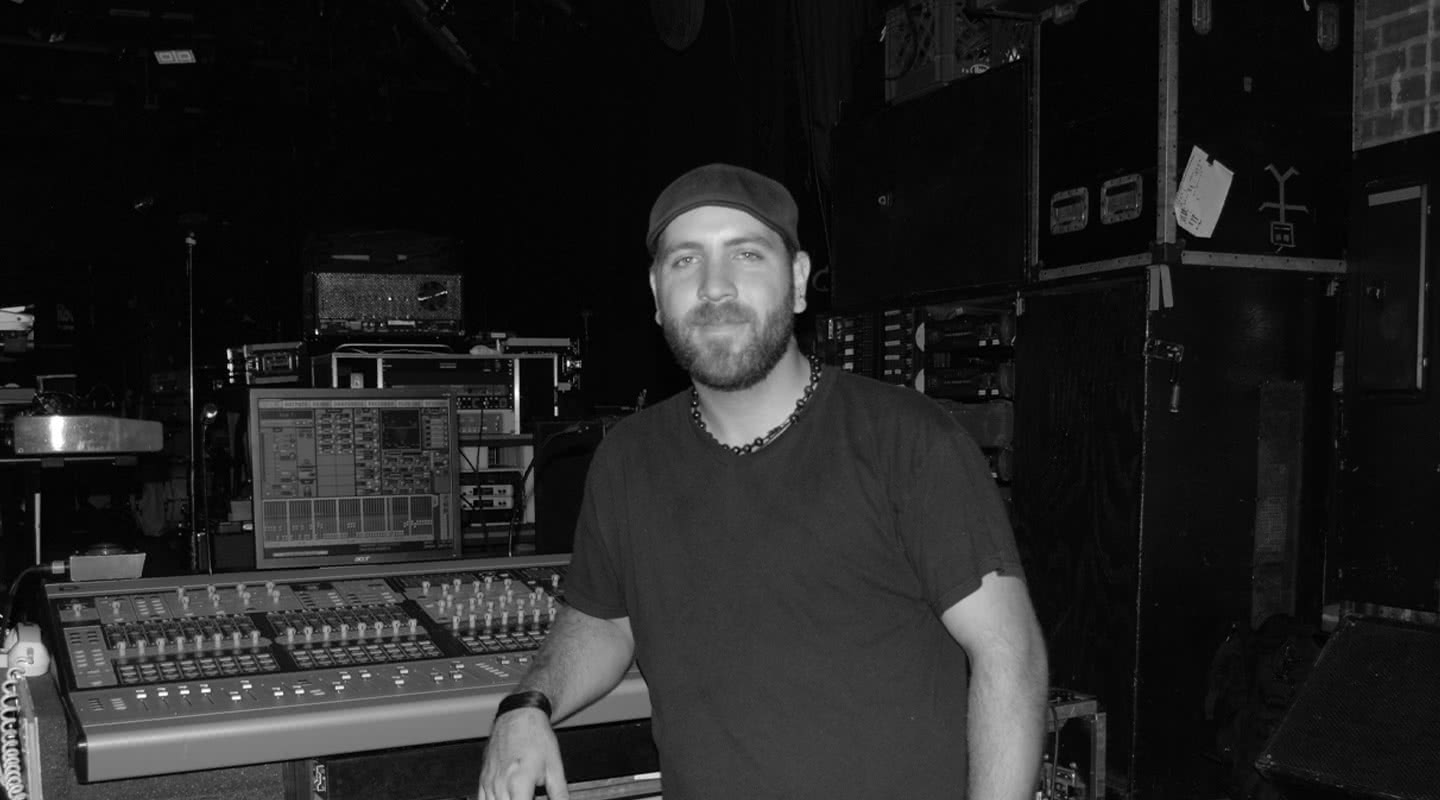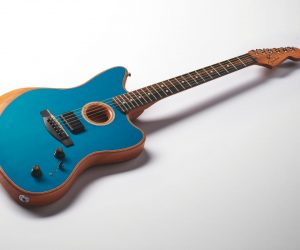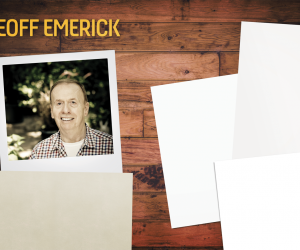
The Quick Mix: Eric Loux
With Eric Loux.
Interview: Neil Gray
Who have you been touring with/mixing recently?
I have spent the last couple years working primarily with American soul singer Allen Stone. I am his FOH Engineer as well as tour manager. Allen and his band keep me busy (they easily play 200+ shows per year), but in 2014 I also had the pleasure of working with Kelis, A Great Big World, Parachute, Karmin and Falling in Reverse, to name a few.
Can you name some other bands that you have worked with?
In the past I’ve worked with Tyrone Wells, Stephen Kellogg, Action Item, Nevershoutnever, Allstar Weekend, Spacehog and countless others as FOH, tour manager, monitors and/or production manager. I have also been a house engineer at many Connecticut and New York City venues, including the legendary Toads Place in New Haven, which is celebrating its 40th year of continuous operation!
How long have you been doing live sound and how did you get started?
I have been an audio professional for 15 years or so and touring about a decade of that time. I first got into live sound back when I was just a kid with a garage band and a crappy PA. That interest led me to study Music Production and Technology at The University of Hartford, Connecticut. From there I worked in various recording studios, moonlighting as a live mixer at small venues. My first touring experience came via a call from a college buddy who’d put together a Connecticut-based ‘super group’ of sorts. After just one week on the road with them, I knew I’d found my calling and never went home!
How do you feel about the current state of technology in live sound?
Live sound and the technology we employ is growing by leaps and bounds. Every month there’s a new speaker box with some advances in DSP, a console update or some new plug-in promising to change the face of the game. While important in their own right, it can be daunting trying to get your head around it all. I always remind myself the average audience member has no idea how ‘awesome’ this new plug-in sounds versus another, or how perfect the show looks on SMAART. All they care about is hearing their favourite artists play their favourite songs, and it’s our job to give them that experience as best we can with the tools best suited for the job.
What’s your favourite console and why?
I’ve always been a fan of the Avid family. They’re easy to use, readily available (everywhere in the world) and support a wide variety of my favourite plug-ins and show setups. I also had the pleasure of taking a Soundcraft Vi1 out with me on the last Allen Stone tour — it was a fine piece of equipment that required little work to yield great results. With the variety of high-end desks on the market today it’s hard to pick a true favourite. I believe it’s always best to be comfortable and fluent with the desk you choose. Even if a console has all the latest gadgets, it’s of little use if you can’t find your away around it to conjure ‘your sound’.
Favourite microphone or any other piece of kit?
If I had to choose, my favourite microphone would be the Telefunken M80, it’s a fantastic vocal mic and I use it for Allen and his band (along with its sister mic the M81). It has a clean sound, tight pickup pattern and an extended high end (more commonly found with condensers) that really sets it apart from other mics in the class. When I first started using them I had to ‘undo’ my brain from the SM58 way of thinking and EQ’ing, but the quality of sound and the mix results I’ve achieved since have been well worth the change.
Other mics of note in my pack would be the Telefunken M82, the Beyer M201, the Shure B91a and the sE X1 R — a budget ribbon microphone that sounds amazing, but is durable and cheap enough to take on the road.
The most important piece of gear I have is my ears. Use them, train them, protect them and trust them. Some gigs I have all the gear and toys that money can buy, other gigs I have little more than an empty show file and my ears.
Most memorable gig or career highlight?
I’ve mixed in many incredible venues around the world — Red Rocks, The Hollywood Bowl, Rock Am Ring in Germany, Byron Bay Blues Fest — but probably the most memorable would be the Roman Amphitheatre in Lyon, France. The venue is built on (and over) the ruins of an ancient Roman Amphitheatre that was constructed around 15BC. It holds 17,000 people who sit and watch the show from the same seats of the original structure. The views are astounding and the aura and history about the place is palpable. Allen had the honoor of opening for his hero, Stevie Wonder. It was a throw-and-go fly date for us so we had to make the most of what we were given, but to open for such a prestigious artist in that ancient setting is something I won’t soon forget.
How has your mixing setup changed in the last 15 years or so?
I’m largely self-taught, and countless years of study, practice and training have all played a roll in the evolution of my mixing practice and setup. Early on I used every trick or toy I’d hear about. You name it I’d try it… and usually all at once! In hindsight it’s somewhat of a shame, but every failure is also a success. I learned how each of these things worked and why, and that gave me better understanding and insight on when to use them and how to employ them properly. Today I spend as much time as possible (if possible) working with the artists to achieve great sounds at the source; great sound in equals great sound out.
I also draw from my past as a studio engineer with a ‘cut only’ mentality when working with EQ. The first instinct in live sound is to turn it up or boost frequencies to find what is missing, when more often than not what you are looking for is already there. A strategic cut on another instrument is often all it takes to make a space for the sound you’re missing, all without loss of headroom or clarity across the mix. I also focus on the mix as a whole instead of individual elements; a collection of great sounds doesn’t always yield a great mix. It’s important to identify what needs to sit up front, and what can reside in the rear. There is a finite spectrum in which the human ear can perceive sound, and it’s our job to use that space wisely to achieve maximum results.
These days I am more often than not working without my ideal compliment of gear. In a sense this is a freeing concept because I no longer feel defined by any one piece of gear or set of processes. By understanding the basics, drawing on my past experiences (both failure and success) and having a plan/goal for my mix, I am able to work with most any setup and still achieve optimum results.
How have your working methods changed over the past 15 years?
I am somewhat of a ‘free thinker’ when it comes to audio. My friends sometimes call me reckless, because at times I use whatever mics are available, decline sound checks (someone still runs a line check) at festivals to help dial in monitors or start from a clean template if I don’t have a decent show file (also at festivals, having board ops label channels and assign outputs only). I also sound check song performances instead of individual channels and tune rooms from my mix instead of playback. However, that ‘reckless abandon’ is part of the method I have cultivated from many years of creating a workflow, honing my skills and chasing my perfect mix. I know microphone specs and how to use them to my advantage. I know that if the band has a great monitor mix, they will give a great performance. I know that the great tones we have built on stage will allow me to push the faders up into a solid base mix and that less is more in terms of channel strip processing. I also know that a great mix is the sum of its parts and that the best way to tune a room is with familiar music, and what could be more familiar than my own mix. All of these things, working in conjunction with conventional thought and traditional work ethics, have helped me continue to improve on my craft and always present the highest quality show I can provide.
What are three mixing techniques that you regularly employ that you’ve learnt in the past 15 years?
Sit the vocal on the mix! I can’t stress this enough. Elementary as it may seem I rarely hear it employed to an extent that benefits the artists on stage. Most of the audience can’t play an instrument, but everyone can and wants to sing along. Putting the vocals on top is an instant way to garner praise, and it will also force you to improve your mixing abilities. To get that vocal settled back down into the mix (on your out feeds or board tape for example) you will need to learn how to use EQ to carve out space in other instruments for the vocal to reside in. Your compression techniques will adapt to enhance and balance the sounds you manipulate instead of squash them into oblivion. Your effects will become subtler, and by default tastier, as you strive to sit that vocal above all the noise. The end result of these efforts will be a clean and balanced mix that will translate to any medium you send it to, along with a room full of happy people.
I go easy on compression and effects. Nothing makes me cringe like hearing a show remain the same relative volume (usually too loud) for an entire set, or listen to an engineer dial in the perfect delay while the lead vocal or snare drum is in dire need of attention. I prefer to ride the faders as much as I can before I go looking for a plug-in. Instead of compress and forget, I learn the songs, the show flow and the players’ musical tendencies, and then for lack of a better word ‘perform’ along with the artist. I’ll keep a finger on the lead vocal to accent the hooks, I use pans to bring solos to the centre instead of boosting the channel, and I’ll even ride the master fader (gently) to create a show-long sense of dynamic progression. The end goal is allowing the show to breathe while keeping the audience excited and captivated by the music. The same idea stands for effects. As time has progressed I find myself using FX less for ‘effect’ and more to create space and colour inside of the mix. The truly great mixers are the ones who leave no obvious trace of their presence.
Proper microphone selection, placement and employment can mean everything to your mix and the sounds you are trying to attain. We all have our favourites, but I personally feel there is no such thing as a ‘bad’ mic, only poor selection and improper use. Take some time to learn the technical details of different mics and use that knowledge to pick proper candidates. Put an ear next to the sound source (at safe volumes) to help determine the best placement (trial and error is key). Observe the surroundings to see if different polar patterns or null spots can be used to your advantage, and don’t forget the 3-to-1 rule!
Finally, if at all possible include each player in the process, working with them to find the right combinations that produce the sounds they are after. If this is all done properly you should be able to walk out front, push up the faders and have great sounds and a solid base mix before you even touch a knob. This means less of the console’s power is needed for fixing, and more of it can be dedicated to mixing!
In the last 15 years what are three pieces of gear, or features, that have come out and been game changers for you?
IEMs: The introduction of quality in-ear monitoring for artists on stage is in my opinion one of the greatest advancements in our field. They give the artist an exponentially better sound experience on stage, deck space is no longer eaten up by huge wedges, feedback is all but eliminated and massive amounts of cabling, amps and boxes can be left in the shop.
In terms of the FOH mix, my stage volume is drastically decreased which eliminates bleed and phasing, I can employ microphones and techniques which may not have been possible on a noisy stage and the performance from the musicians is (usually) noticeably better. A key element of a great mix is a great performance. Not to mention the comfort of having a reliable set of reference monitors with you at all times that fit nicely into your front pocket!
Digital consoles: I came up during the final days of analogue, mixing on huge desks with tons of outboard gear and more patching than I ever care to do again. While I miss some of the analog ‘sound’ and the tangible feel of knobs and faders, it’s hard to deny how far digital consoles have come. Saved show files, preloaded channel strips, digital patch bays, tablet control, plug-ins, digital snake runs, the list of pros is epic. Their sound continues to improve and they give us the control to really push audio to the next level. The ability to walk out to a console with little or no sound check, yet feel confident that the first down beat will sound great (or at least close) is a relief we used to only dream of. I recently mixed a large rock festival in Belgium on a Midas 3000 complete with the best outboard gear. Despite no sound check part of me was stoked to put my old friends into action. But after three stressful and sweaty songs worth of dialling in gains, setting EQs, chasing down sub-mixed hiss channels, pleading with the system tech to re-patch inserts and dancing back and forth in front of the console (the band was mixed on channels 1-20, but the outboard was way out yonder past channel 64!), I realised it was time to move past my analogue crush.
Smart phones: What the heck do smart phones have to do with audio? Besides communications and Eventric’s Master Tour, I now have a wealth of knowledge, information, apps and contacts at my finger tips 24 hours a day. Any manual, book or article can be found on the web; notes and emails are readily available; knowledgeable friends can be contacted any time for help; apps exist to help train our ears and run our consoles/systems remotely; and music can be played back, recorded and manipulated. So much power in our pockets!
Any tips/words of wisdom for someone starting out?
Never stop learning. Read everything you can and ask questions of anyone willing talk with you, especially experienced mixers. Acknowledge your weaknesses and focus on strengthening them. Never stop working hard to improve your game.
Label everything. I name, number and colour code every cable and connection on my stage. A few minutes of prep can save precious time when something decides to stop working. Nobody wants to be that guy chasing down cable while an audience watches and waits.
But most importantly… be happy! How cool is our profession?! Sure things will get tough at times, but there are plenty enough disgruntled sound guys out here already. Stay positive and be fun to work with. A great mix can get you on the road, but a great demeanour will keep you there.
















RESPONSES